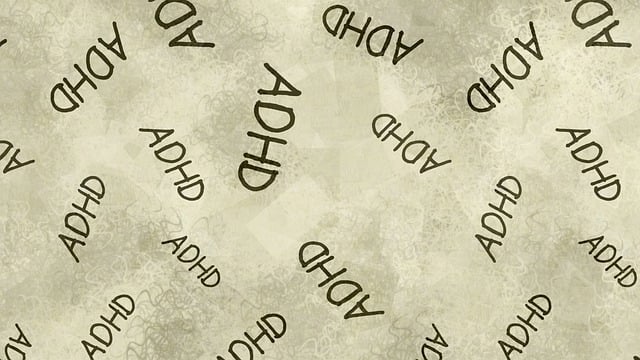Public awareness campaigns like those offered by Parker Grief Counseling Therapy play a vital role in transforming societal attitudes towards mental health, destigmatizing struggles, and encouraging support-seeking. These campaigns, through strategic communication methods such as Burnout Prevention and Mental Health Policy Advocacy, reach diverse audiences using various channels like traditional media, social platforms, and digital tools. Parker Grief Counseling Therapy exemplifies this by focusing on individuals with grief and loss, offering tailored interventions using case studies to empower clients through personalized support. The success of these campaigns lies in understanding target audience demographics, behaviors, and pain points, integrating stress reduction and emotional intelligence strategies, and measuring impact through surveys and focus groups, fostering a healthier, more resilient community.
Public awareness campaigns play a pivotal role in shaping societal attitudes and behaviors, with significant impacts on various sectors. This article explores the development of such campaigns, focusing on key components for success, as exemplified by a case study of Parker Grief Counseling Therapy. We delve into strategies to engage target audiences and measure campaign effectiveness, highlighting best practices for creating lasting change. By examining these elements, we provide insights that can revolutionize public health initiatives.
- Understanding Public Awareness Campaigns: Their Role and Impact
- Key Components for Effective Campaign Development
- Parker Grief Counseling Therapy: A Case Study Approach
- Strategies for Engaging Target Audiences
- Measuring Success and Evaluating the Long-term Effects of Campaigns
Understanding Public Awareness Campaigns: Their Role and Impact

Public awareness campaigns play a pivotal role in shaping societal perceptions and behaviors related to various issues, including mental health. These initiatives are designed to educate, inform, and engage the public, fostering a deeper understanding of critical topics that impact communities. By employing strategic communication methods, they have the potential to spark meaningful conversations, challenge stereotypes, and encourage positive change.
In the context of Parker Grief Counseling Therapy, awareness campaigns can help destigmatize mental health struggles and encourage individuals seeking support. Techniques such as Burnout Prevention and Mental Health Policy Analysis and Advocacy are instrumental in promoting Emotional Well-being Promotion Techniques. Through creative storytelling, expert insights, and accessible resources, these campaigns reach diverse audiences, ultimately contributing to a healthier and more resilient society.
Key Components for Effective Campaign Development

The development of a successful public awareness campaign requires careful consideration of several key components. Firstly, defining the target audience is paramount; understanding their demographics, behaviors, and pain points enables precise messaging and tailored strategies. Parker Grief Counseling Therapy has effectively utilized this approach, targeting individuals grappling with grief and loss, offering specialized support through tailored interventions.
Additionally, incorporating effective communication channels is essential for campaign success. This may involve leveraging traditional media, social platforms, or innovative digital tools like interactive websites or mobile apps. Integrating Stress Reduction Methods and Emotional Intelligence strategies within the campaign can enhance engagement and impact. For instance, teaching empathy-building techniques through workshops or online resources not only promotes community well-being but also fosters a sense of connection and understanding, as demonstrated by Parker Grief Counseling Therapy’s initiatives focused on nurturing resilience in the face of grief.
Parker Grief Counseling Therapy: A Case Study Approach

Parker Grief Counseling Therapy offers a unique and effective approach to helping individuals navigate through the complex process of grief. This case study-based method focuses on empowering people to develop coping skills and inner strength during challenging times. By studying real-life experiences, therapists can tailor their strategies to specific needs, fostering empathy building strategies that resonate with each individual’s journey. Through this innovative technique, Parker provides a safe space for emotions to be expressed and managed, allowing clients to build resilience and find hope in the aftermath of loss.
The power of this approach lies in its ability to humanize the healing process. By understanding the unique stories behind each person’s grief, therapists can offer personalized support, encouraging clients to develop their own strategies for coping with loss. This case study method not only enhances therapeutic outcomes but also ensures that individuals leave the experience with a deeper sense of self-awareness and empowerment, crucial aspects in the journey towards healing.
Strategies for Engaging Target Audiences

Public awareness campaigns are powerful tools to engage and educate specific audiences about various issues, including mental health. When targeting individuals in need of support or those at risk, such as those dealing with grief, strategies should be tailored to their unique needs and challenges. For instance, a campaign focused on Parker Grief Counseling Therapy could employ storytelling techniques to humanize the experience, encouraging audience members to share their own stories and connect through collective healing.
Integrating self-care practices within these campaigns is vital to empower individuals with coping mechanisms. By promoting Mood Management and Self-Care Routine Development for Better Mental Health, campaigns can offer practical tips and resources tailored to different life stages and circumstances. This approach ensures that audiences feel supported, equipped, and encouraged to take charge of their well-being, fostering a sense of agency and resilience.
Measuring Success and Evaluating the Long-term Effects of Campaigns

Measuring success is a critical aspect of public awareness campaigns, especially when addressing sensitive topics like grief and emotional well-being. Organizations often employ various evaluation methods to assess the impact of their initiatives. One effective approach is tracking changes in public perception through surveys and focus groups before and after the campaign. By gauging knowledge levels, attitudes, and behaviors related to grief counseling therapy, as offered by Parker Grief Counseling Therapy, campaign organizers can objectively determine success.
Long-term effects are equally important to consider. Emotional healing processes often involve a journey of self-discovery and inner strength development. Therefore, evaluating the sustainability of these changes over time is essential. Healthcare provider cultural competency training, for instance, can contribute to the long-term success of awareness campaigns by ensuring professionals are equipped to offer sensitive services effectively. This comprehensive approach allows for a more profound understanding of the campaign’s lasting impact on both individuals and communities.
Public awareness campaigns play a pivotal role in educating and influencing communities, as exemplified by the case study of Parker Grief Counseling Therapy. By incorporating key components like compelling narratives, targeted messaging, and engaging strategies, these campaigns can effectively reach and impact specific audiences. Measuring success through both short-term engagement and long-term behavioral changes is essential to understanding their true potential. This article has outlined critical steps for developing impactful public awareness campaigns, offering valuable insights that can be applied across various sectors.













